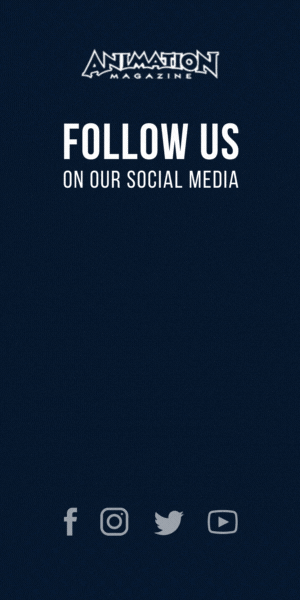|
Getting your Trinity Audio player ready...
|
Vanish’s The Bully Monster is a powerful animated short that looks at the long-term impacts of bullying at school. It centers on a young boy who keeps silent about the bullying he suffers at school. When his mother notices stains on his school uniform, they become the starting points for a revealing conversation.
The short, which is one of the projects competing in Annecy this year in the Commissioned Films section, was conceptualized by BETC Havacs and produced by Brazil’s Vetorzero/LOBO and DaHouse Sound. We had a chance to talk to the art director Ricardo Montes to find out more about this project.
Animation Magazine: Can you discuss the visual style of the short and how you achieved it?
Ricardo Montes: As art director, I first came up with a visual proposal that was to create these characters with a felt texture to create an even greater connection with the clothing universe, since the client was Vanish. As the work developed, the film’s directors, Gabriel Nobrega and Pedro Conti, came up with the idea of incorporating this idea more into the characters’ hair but not their skin, to create a unique aesthetic, in addition, of course, to the stain itself, which also has this felt texture. In addition, other proposals emerged, such as making the laughter of the other children be the monster’s food and visually making this laughter have a gummy texture. The film’s photography also becomes more desaturated as the boy becomes increasingly sad and the monster becomes bigger and stronger, until the situation is resolved and the ending gains a more vibrant and sunny photography.
How many people worked on the project with you?
A large team worked on this project. Considering the client, agency and production teams, there were around 80 people. Working directly on the technical aspects, there were around 50 people. I’m not sure the client would like me to disclose the budget.
Which animation tools were used?
I never went into much technical detail about the software used by the Vetorzero/LOBO team, but in general they used traditional 3D animation techniques with some motion graphics and matte painting elements. We considered testing some more experimental techniques, but due to the tight deadline, the directors thought it would be more prudent to produce in a traditional way.
Who are your big animation inspirations?
It’s impossible not to mention the classics, Disney, Hanna-Barbera, Pixar… But what fascinated me most about the world of animation was a TV channel in Brazil called “TV Cultura.” When I was a child, they showed many children’s programs with animations that explored several different techniques, such as 2D, stop motion with clay, watercolor, etc. It shaped a generation of Brazilian children who dreamed of being part of those stories.
What are you working on next?
In animation, the two projects I have been working on in parallel with my career as an art director in advertising are an internet series of educational 2D animations for children and, more ambitiously, I am finalizing a script for a 3D animated feature film.
What is your take on the animation scene in Brazil and worldwide in general?
I see many pessimistic predictions regarding the animation market because of artificial intelligence, but I see a much more optimistic side to these new ways of producing. More studios are having the possibility of becoming commercially viable and with that, professionals will have more and more animation companies to work for, unlike the market centralized in the few large production companies. In Brazil, animation production companies are still very focused on the advertising market and have few projects in entertainment, but I believe that new technologies will change this scenario.











 Win a Funko X Lilo & Stitch Prize Pack!
Win a Funko X Lilo & Stitch Prize Pack! 


